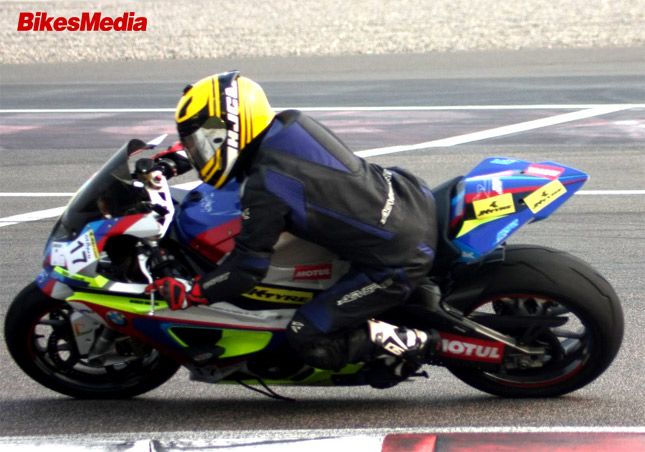 After thinking about this topic throughout the night and not sleeping even for a bit, I decided to get off my bed at 4 AM, pull this thing out of my head and finally confront it face to face. The reason for the entanglement of my thoughts was the reaction of every mechanic when I asked him about retarding an engine’s timing and how it will affect the bike’s performance, it was vagueness, like the smog over Noida’s skies during January, nothing was clear. Almost every mechanic either spoke in some different language (Not literally) or avoided eye contact or both. Why it was so difficult for them to fiddle around with one little spark in the engine? Well, at this time in the early morning, I think I have an answer.
After thinking about this topic throughout the night and not sleeping even for a bit, I decided to get off my bed at 4 AM, pull this thing out of my head and finally confront it face to face. The reason for the entanglement of my thoughts was the reaction of every mechanic when I asked him about retarding an engine’s timing and how it will affect the bike’s performance, it was vagueness, like the smog over Noida’s skies during January, nothing was clear. Almost every mechanic either spoke in some different language (Not literally) or avoided eye contact or both. Why it was so difficult for them to fiddle around with one little spark in the engine? Well, at this time in the early morning, I think I have an answer.What is Engine timing retardation?
With the word retard, it is clear that something is being delayed or slowed. In this case, it is the ignition Spark of the Engine. When the piston reaches the top of the cylinder, then that position is known as Top Dead Center (TDC). The spark ignites the fuel-air mixture and pushes down the piston generating power. What happens when we retard this ignition timing is that, the spark generates after the TDC. Now delaying the ignition timing means igniting the spark after the piston has already started traveling down. So are those people who retard their engine timing actual retard?
Are they actually retarded?
No, they are not. Let’s see why, in the old Harleys and even in old Royal Enfields, the kickback from the kick starter was strong enough to send you flying up or even hurting your leg really bad. This usually was the result of the plugs being fired mid-stroke, so riders used to retard their timing to minimize that effect and make the kick start less life-threatening.
RELATED ARTICLE: 4-Stroke Petrol Engine Working Explained
Not just that but in high-performance superbikes which usually take part in drag races, retarding the engine timing became an efficient way of saving the engine amidst such a high surge of power. In all of the turbocharged, supercharged engines and even those using Nitrous Oxide as a boost, the air-fuel mixture is quite dense already. So in order to compensate for this; engine’s timing was retarded otherwise at such high pressure and temperature the engine is very much likely to destroy itself in the process of attaining peak power. These examples show the good use of retarded engine timing. Now let’s see what is bad about this already controversial process.
The Bad Side:
Changing your ignition timing is going to change how power is delivered in your motorcycle. Which means it changes everything. A lag in power delivery will make you feel like you’re riding a 100cc despite being on a 200cc motorbike. As already mentioned above, when the piston travels all the way up to the cylinder and is at Top Dead Center point then it is at the end of its stroke. The stroke which follows is power stroke in which the piston will go down with the help of a controlled explosion created by the ignition spark.
RELATED ARTICLE: Importance Of Air Fuel Mixture/Ratio Explained
In retarded timing, this power generating spark is delayed and the piston starts traveling down on its own, then the spark is ignited and the air-fuel mixture is burned. This process reduces the energy which is applied to the piston to make it go down, as it’s already on its way back. This causes incomplete combustion since the spark happens too late during the cycle. Results of this process include loss in power, the release of a lot of unburnt hydrocarbons due to inefficient burning process, which pollutes the environment, and more wear to the engine.
Final Thoughts:
While retarding the engine’s timing is at one end of the spectrum, far to the other end is advancing the engine timing. This stuff is used because even under normal conditions without any change to the timing, there is always a difference in the power stroke and ignition of the air-fuel mixture. It can be 0.6 of a second at 1300 RPM and 0.0060 of a second at 10,600 RPM. As we move up the rev range this "given time" decreases while the piston speed increases continuously. This calls for advance timing as the air-fuel mixture needs to ignite early in order to keep up with the high RPMs.
There’s again a lot more story to it but that is a matter for another time. Until then we need to talk to our friendly mechanics about retarding the engine timing and let them know that yes, we understand that it’s that one cloud with the thinnest silver lining but being a thrill junkie and anxious to know what it feels like to ride a supercharged nitrous oxide booted on a long straight, we are all down with it.
Do let us know in the comments what you guys think. For everything related to Bikes stay tuned to BikesMedia.
By: Yetnesh Dubey











